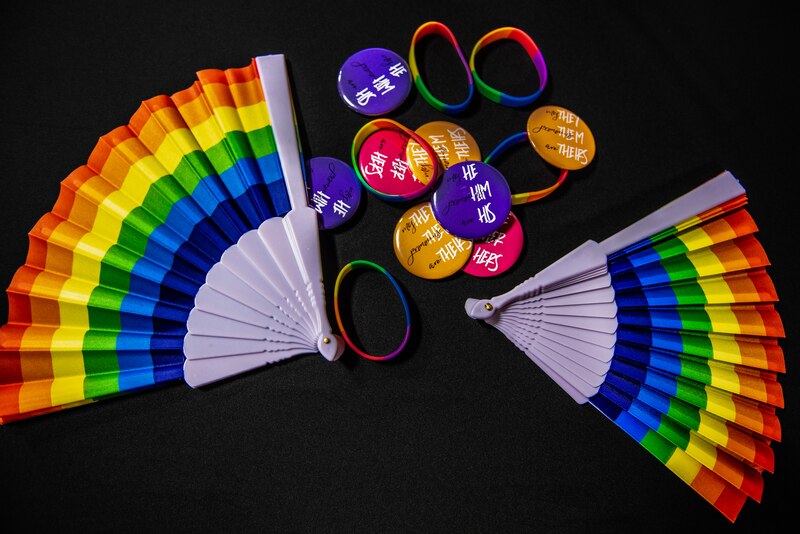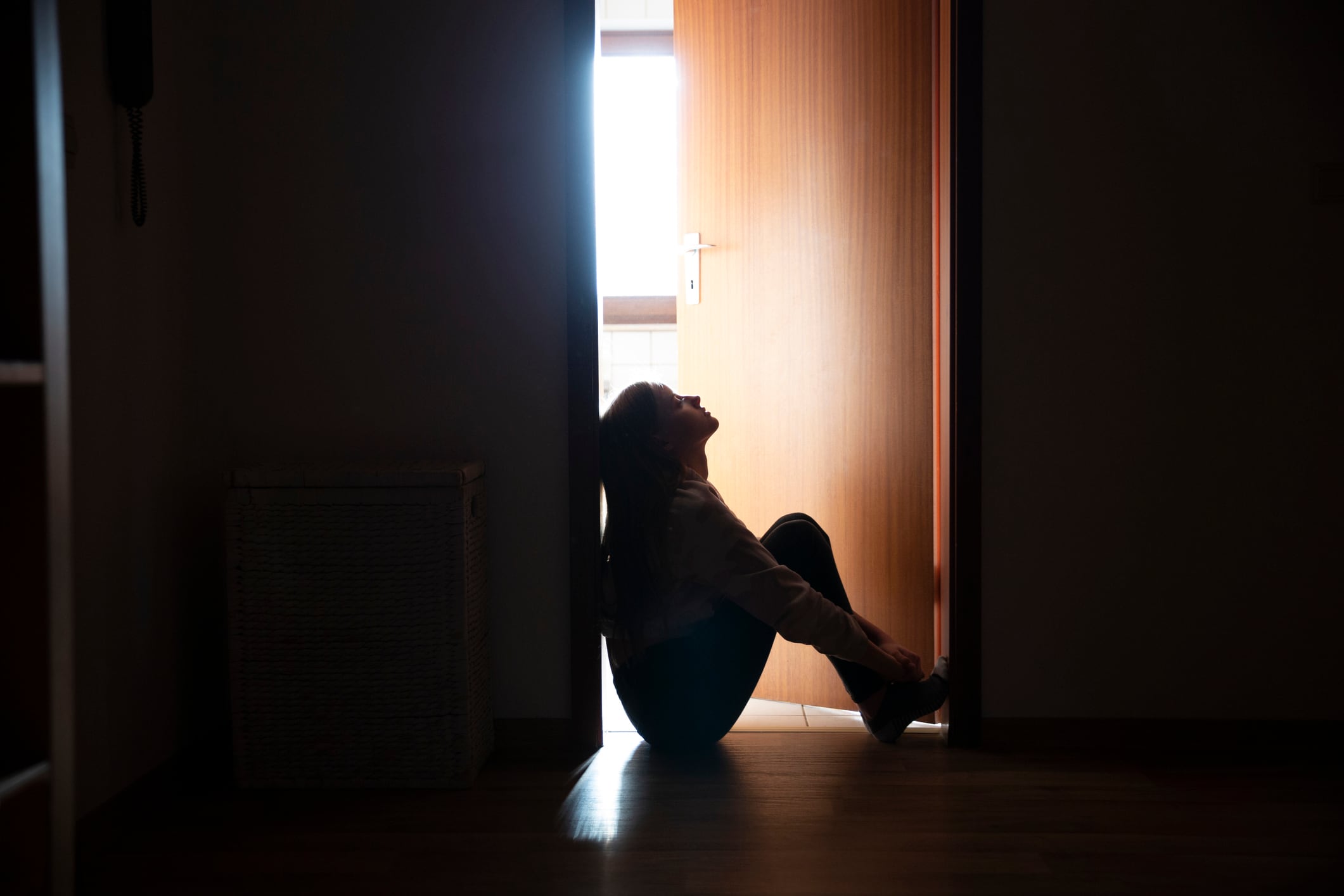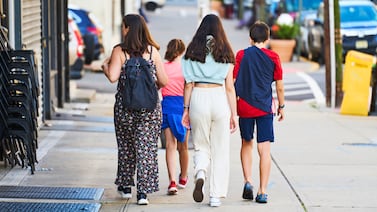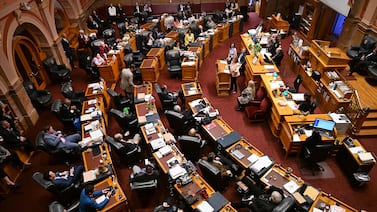Patricia Reeves and her husband have tried to make school safe for their child.
They pushed administrators at one school to stop students from bullying Milo, who is nonbinary, and withdrew Milo from a different school after a teacher refused to use the correct pronouns. Inside their West Texas home, the parents do their best to replenish their child’s self esteem and resilience — to “build up our little soldier,” as Reeves put it.
But try as they might, they can’t completely shield Milo from the difficulty, even the danger, of being different at school.
“As long as you’re a fierce mom, you can get out in front of it,” Reeves said. “But the damage is already done.”
The damage is extensive: Most LGBTQ students feel unsafe at school and struggle with mental health, according to two new reports based on large-scale student surveys.
Reported rates of depression, hopelessness, and suicidal thoughts were far higher among LGBTQ students than their peers last school year, and highest among transgender and nonbinary youth, according to a survey of students in 20 states by the nonprofit YouthTruth. Released Monday, the survey also found that girls’ mental health is worse than boys’.
Another recent report helps explain LGBTQ students’ distress: The vast majority experienced harassment or assault during in-person school, and many heard school employees use homophobic language, according to a national survey of LGBTQ students conducted in 2021 and released this month by GLSEN, a group that promotes safe and inclusive schools.
“Most LGBTQ students are going to schools that are unsafe, unwelcoming, and not affirming,” said Caitlin Clark, a senior research associate at GLSEN who co-authored the report.
The reports highlight how the youth mental health crisis, like the COVID-19 pandemic, has ravaged marginalized groups more than others. They also suggest that the national campaign to bolster young people’s mental health could fail LGBTQ students if it ignores the sources of their pain, including mistreatment at school and social stigmatization made worse, advocates say, by the recent surge in anti-LGBTQ laws.
In her support group for parents of gender-nonconforming children, Reeves hears about what happens when vulnerable young people are subjected to such hostility.
“Every single one of our little ones has some sort of mental health challenge,” she said, “because of not being fully accepted.”
Worse mental health outcomes for girls and LGBTQ students
Already on the decline for at least a decade, young people’s mental health spiraled downward during the pandemic so rapidly that medical groups declared a “national emergency.”
But warnings of a widespread crisis can obscure a consistent trend in the data: LGBTQ students and girls are struggling more than their peers.
More than 80% of high school students who identify as transgender or nonbinary and nearly 70% of girls cited depression, stress, or anxiety as obstacles to learning last school year, compared with 40% of boys who reported such struggles, according to the YouthTruth survey, which was taken by more than 220,000 students during the 2021-22 school year but is not nationally representative. And from elementary to high school, boys were more likely than girls and nonbinary students to report feeling happy.
The survey also showed that roughly a third of LGBTQ high school students had seriously considered attempting suicide over the past year — four times the share of non-LGBTQ students who said they had considered it.
Similar trends have emerged in surveys conducted by the Centers for Disease Control and Prevention during the pandemic and over the preceding decade: High school students who are female or LGBTQ are the most likely to report poor mental health and suicidal thinking.
Those students “all were doing worse prior to the pandemic,” said Kathleen Ethier, director of the CDC’s Division of Adolescent and School Health, which conducted a nationally representative student survey in 2021. “What we saw in this data was really a continuation of that.”
LGBTQ students find limited support at school
Tati Martínez Alvarez wishes their school had a club for LGBTQ students, “a place where we could come together without fearing judgment.”
But despite students’ demands for such a club, their small public high school in South Texas does not offer one, said Tati, who is in the 11th grade. Even though many students identify as LGBTQ, Tati said the school does little to acknowledge their community, much less embrace it.
“I don’t see that happening,” they said. “Maybe in like 20 years.”
Tati’s experience is the norm nationwide, according to the GLSEN survey, which polled more than 22,000 students in grades 6-12 who identify as LGBTQ. The students are based in all 50 states, as well as Washington D.C. and several U.S. territories.
Just 35% of respondents said their school had an active Gay Straight Alliance or similar club during the 2020-21 academic year. Less than 30% said their classes include any LGBTQ-related topics, and only 8% said their schools had policies supporting transgender and nonbinary students.
Instead of support, many LGBTQ students face hostility at school, according to the survey.
More than 80% of respondents who attended in-person school at some point in 2020-21 experienced harassment or assault based on personal characteristics, including sexual orientation, gender expression, or race or ethnicity. Nearly 60% of students reported hearing teachers or other school staff make homophobic remarks, and more than 70% heard staff make negative comments about gender expression.
Such intolerance is sadly common in schools, said Dr. Morissa Ladinsky, a pediatrician in Alabama who provides gender-affirming care to transgender young people.
“While some have faced bullying from students (which most don’t report for fear of reprisal or not being taken seriously), many experience intimidation and even straight up bullying from the adults in their school,” she wrote in an email, adding that the constant threat of mistreatment can lead to “anxiety, depression and academic underachievement.”
LGBTQ students who are victimized at school are more likely than their peers to be absent, earn low grades, and suffer from low self-esteem and depression, the GLSEN survey found.
“When you don’t see yourself represented” at school, Tati said, you “can feel very confused, very anxious, very depressed, because there’s nowhere to turn.”
Anti-LGBTQ laws add to anxiety
In many states, LGBTQ students cannot turn to elected officials for support.
Instead, some Republican politicians have sought to restrict the rights of LGBTQ students and prohibit school practices designed to support those students.
At least 18 states have passed laws barring transgender students from sports teams or school bathrooms that match their gender identity. Last month, Virginia Gov. Glenn Youngkin’s administration proposed new restrictions on transgender students, including a requirement that teachers use the pronouns associated with students’ sex assigned at birth rather than their preferred pronouns.
Other states have sought to limit classroom discussions about gender and sexuality, which is the focus of a new national bill that Congressional Republicans introduced last week. Meanwhile, some school districts have quietly removed books with LGBTQ content and ordered teachers to take down LGBTQ pride flags.
The new policies are making life harder for many students, advocates say.
In Alabama, which passed several anti-LGBTQ laws this year, Dr. Ladinsky said some of her transgender patients have stopped using the restroom during the school day because of restrictions on which facilities they can use. She also heard from teachers who disbanded their LGBTQ clubs, presumably due to pressure from administrators. (In April, Dr. Ladinsky joined a legal challenge against a new Alabama law that would criminalize gender-affirming medical care for minors. A judge has temporarily stopped the law from taking effect.)
Some students see efforts to restrict LGBTQ rights as a personal attack, said Tati, the Texas high schooler.
“It just spreads the message that they genuinely don’t see you as a person,” they said. “They just see you as something that they need to get rid of.”
Protecting LGBTQ students

The new reports show the urgent need to make schools safer for LGBTQ students, advocates said.
Schools can establish LGBTQ clubs, enforce anti-bullying policies that explicitly protect LGBTQ students, provide staff training on inclusive practices, and give transgender students access to facilities that match their gender identity, experts said, though laws in some states might restrict such policies.
Kathleen Ethier, the CDC official, said policies that make schools more welcoming for LGBTQ students have been shown to also benefit their peers.
“Something about creating an inclusive school” and removing “anti-LGBTQ toxicity,” she said, “makes the school better for everyone.”
There are many ways to make schools safer and improve students’ mental health, said Tati, who has championed the issue as a youth advisor to the Intercultural Development Research Association, a Texas-based nonprofit that promotes educational equity. The challenge is convincing adults to take action.
“People don’t realize that the culture isn’t going to change,” Tati said, “unless everyone makes an effort.”
Patrick Wall is a senior reporter covering national education issues. Contact him at pwall@chalkbeat.org.







